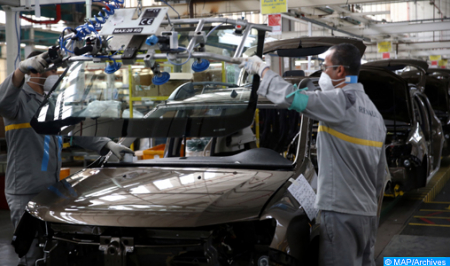In the third quarter of 2024, five Moroccan regions alone accounted for over 72% of all active individuals aged 15 and older, the High Commission for Planning (HCP) revealed in its latest labor market report. Dominating the list is Casablanca-Settat, which alone holds 22.3% of Morocco’s active workforce. Following closely are Rabat-Salé-Kénitra (13.7%), Marrakech-Safi (12.9%), Fès-Meknès (11.9%), and Tanger-Tétouan-Al Hoceima (11.6%).
This concentration of activity reflects more than just population density; it underscores regional economic strengths and opportunities that continue to draw workers. Notably, only four regions posted activity rates above the national average of 43.6%: Tanger-Tétouan-Al Hoceima leads with a 47.6% activity rate, followed by Casablanca-Settat at 45.7%, the Southern regions with 45.4%, and Marrakech-Safi at 43.7%.
Conversely, the regions of Drâa-Tafilalet, Béni Mellal-Khénifra, Oriental, and Souss-Massa are trailing with the lowest activity rates, each falling below 42%. These figures highlight disparities within the country’s labor market, where regional economic growth varies greatly.
When it comes to unemployment, six regions are shouldering the vast majority, with 78.1% of all unemployed individuals concentrated in Casablanca-Settat, Fès-Meknès, Rabat-Salé-Kénitra, Oriental, Marrakech-Safi, and Tanger-Tétouan-Al Hoceima. Casablanca-Settat alone represents nearly a quarter of all unemployed people nationwide, with a striking unemployment rate of 15.3%, while the region also boasts a high workforce participation rate.
In contrast, Morocco’s Southern region has the highest unemployment rate overall, peaking at 24.3%, while Oriental follows with 21.4%. Fès-Meknès is close behind, with an unemployment rate of 15.2%. On the other end of the spectrum, Marrakech-Safi and Tanger-Tétouan-Al Hoceima have the lowest unemployment figures, standing at 9.9%.
The HCP’s findings underscore not only regional variations in workforce distribution but also in employment challenges, as regions with high activity rates also tend to experience lower unemployment. This dual focus on both activity and unemployment rates offers critical insights into Morocco’s evolving labor landscape, pinpointing both areas of economic vitality and regions where job opportunities remain limited.
As Morocco’s economy continues to navigate these disparities, strategies targeting regional workforce development and job creation could play a crucial role in balancing out these economic contrasts.





